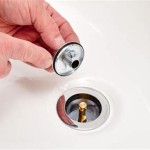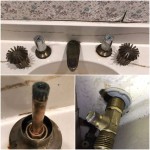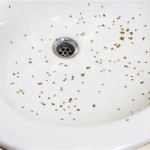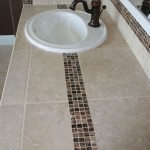How to Install a Bathroom Vent Duct
Installing a bathroom vent duct is an essential step in ensuring proper ventilation and moisture control in your bathroom. A well-functioning vent duct removes excess humidity, preventing mold growth, mildew, and other issues that can damage your home and compromise indoor air quality. While hiring a professional is always recommended, installing a bathroom vent duct yourself can be a manageable DIY project for those with basic construction skills and a willingness to follow safety guidelines.
Planning and Preparation
Before beginning the installation, it's crucial to plan the project meticulously. The first step involves determining the best location for the vent duct and the exhaust fan. Consider factors such as the existing plumbing, electrical wiring, and roof structure. Ideally, the vent should terminate at least 3 feet above the roofline and at a distance of at least 10 feet from any windows or air intakes.
Once the location is determined, you'll need to gather the necessary materials. These include:
- Vent duct: The duct should be made of rigid PVC or aluminum, with a diameter of 4 inches or larger for optimal airflow.
- Exhaust fan: Choose a fan with a high CFM (cubic feet per minute) rating to ensure efficient removal of moisture.
- Vent cap: This component is essential for protecting the vent from rain and debris.
- Clamps and connectors: These will be used to secure the duct to the exhaust fan and to connect different sections of the vent.
- Insulation: Insulating the duct helps prevent heat loss and condensation.
- Tools: Essential tools include a drill, saw, measuring tape, level, screwdriver, and safety glasses.
Installation Process
The installation process involves several steps that must be executed carefully for optimal results.
1. Running the Duct
Begin by running the vent duct from the exhaust fan to the roofline. If you need to pass through an attic or crawl space, ensure the duct is securely mounted and supported. Use clamps and connectors to join different sections of the duct, ensuring a tight fit to prevent air leaks.
2. Roof Penetration
Carefully cut a hole in the roof for the vent cap. The hole should be slightly larger than the base of the vent cap to allow for a secure fit. Make sure the vent cap is properly positioned and centered on the roof.
3. Securing the Vent Cap
Securely attach the vent cap to the roof using screws or nails. Ensure the cap is firmly secured to prevent it from blowing off during strong winds.
4. Installing the Exhaust Fan
Mount the exhaust fan on the ceiling or wall, ensuring that it is positioned directly above the duct opening. Connect the fan to the duct using the vent cap and duct clamps.
5. Electrical Connections
Connect the exhaust fan to an electrical outlet. It is crucial to consult with an electrician if you are unfamiliar with electrical wiring. Ensure all electrical connections are secure and meet safety standards.
Finishing Touches
Once the vent duct is installed, it's important to seal any gaps or openings in the ductwork. This helps to prevent air leaks and ensure efficient operation of the vent. Use duct tape or sealant to seal any gaps between duct sections, around the exhaust fan, and where the duct passes through the roof. Finally, test the fan to ensure it is functioning properly.

Installing A Bathroom Fan Fine Homebuilding

Venting A Bath Fan In Cold Climate Fine Homebuilding

Blog

Install A New Bathroom Vent Fan Light The San Fernando Valley Sun

Bathroom Exhaust Fans Building America Solution Center

How To Use An In Line Exhaust Fan Vent Two Bathrooms Diy Family Handyman

Bathroom Exhaust Fans Building America Solution Center

How To Install A Bathroom Fan Diy Family Handyman

How To Replace And Install A Bathroom Exhaust Fan From Start Finish For Beginners Easy Diy

Inspecting For Air Sealing At Kitchen And Bathroom Exhaust Fans Internachi
Related Posts







